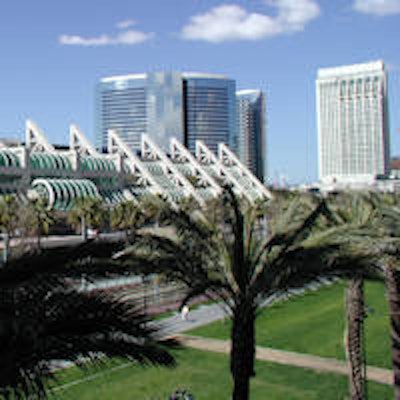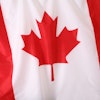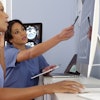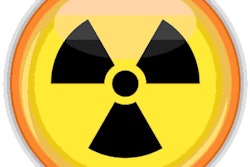
Women overestimate the amount of radiation they receive from mammography exams, which could lead them to avoid screening, according to data presented at the American Roentgen Ray Society (ARRS) annual meeting in San Diego.
Radiation dose is a hot topic, and patients have a lot of questions about how much radiation they receive during a procedure and the possible effects of exposure, said lead researcher Jacqueline Hollada from the University of California, Los Angeles (UCLA) Iris Cantor Center for Breast Imaging.
"Understanding patients' perspectives regarding ionizing radiation can help imaging staff address common misunderstandings," she said.
Hollada and colleagues surveyed patients' knowledge of radiation dose associated with mammography, including 1,350 women between the ages of 19 and 89 presenting for annual mammography over a nine-month period.
 Jacqueline Hollada from UCLA's Iris Cantor Center for Breast Imaging.
Jacqueline Hollada from UCLA's Iris Cantor Center for Breast Imaging.
"Our main goal was to gauge patients' perceptions of how much radiation they receive from mammography, compared to five benchmarks," Hollada told AuntMinnie.com. "Telling a woman how many millisieverts an exam gives isn't as useful."
Hollada's group asked survey participants to rate the amount of radiation in a single mammogram (0.4 mSv) as being significantly less, slightly less, about the same, slightly more, or significantly more than five radiation benchmarks arranged on a logarithmic scale, with 1 being the highest dose and 5 being the lowest dose:
- The limit for a radiation worker per year (50 mSv)
- The average yearly background dose (3.1 mSv)
- The average annual dose from food (0.3 mSv)
- The dose received from an airplane flight from Los Angeles to New York City (0.04 mSv)
- The extra dose received from spending two days in Colorado (0.006 mSv)
The researchers then determined how each participant ranked a mammogram among the radiation sources.
The average rank given for mammography was 2.95, which differed significantly from the correct rank of 3.5, Hollada said.
"The radiation dose for a mammogram falls between the annual dose from food and the average yearly background dose," she told AuntMinnie.com. "On a logarithmic scale, a difference of 1 is multiplied by 10, so the difference between 2.95 and 3.5 is dramatic."
Although the survey participants on average overestimated the radiation exposure of a mammogram, the majority (72%) said they believe the benefits of the exam outweigh the risks, said Hollada, who plans to continue the research.
"Going forward, we plan to investigate the benefits of including radiation benchmarks in educational materials, so that patients have a better perspective," she concluded.




















